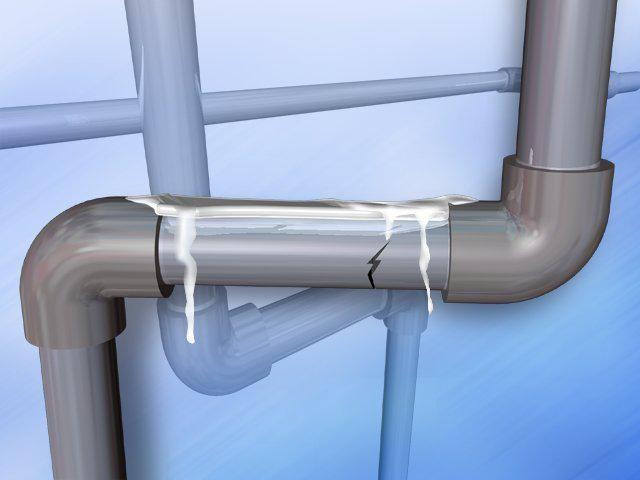When water freezes, it expands. That’s why a can of soda explodes if it’s put into a freezer to chill quickly and forgotten. When water freezes in a pipe, it expands the same way. If it expands enough, the pipe bursts, water escapes and serious damage results.
Why Pipes Burst
Surprisingly, ice forming in a pipe does not typically cause a break where the ice blockage occurs. It’s not the radial expansion of ice against the wall of the pipe that causes the break. Rather, following a complete ice blockage in a pipe, continued freezing and expansion inside the pipe causes water pressure to increase downstream — between the ice blockage and a closed faucet at the end. It’s this increase in water pressure that leads to pipe failure. Usually the pipe bursts where little or no ice has formed. Upstream from the ice blockage the water can always retreat back towards its source, so there is no pressure build-up to cause a break. Water has to freeze for ice blockages to occur. Pipes that are adequately protected along their entire length by placement within the building’s insulation, insulation on the pipe itself, or heating, are safe.
Regional Differences
Generally, houses in northern climates are built with the water pipes located on the inside of the building insulation, which protects the pipes from subfreezing weather. However, extremely cold weather and holes in the building that allow a flow of cold air to come into contact with pipes can lead to freezing and bursting.
Water pipes in houses in southern climates often are more vulnerable to winter cold spells. The pipes are more likely to be located in unprotected areas outside of the building insulation, and homeowners tend to be less aware of freezing problems, which may occur only once or twice a season.
Pipes in attics, crawl spaces and outside walls are all vulnerable to freezing, especially if there are cracks or openings that allow cold, outside air to flow across the pipes. Research at the University of Illinois has shown that “wind chill,� the cooling effect of air and wind that causes the human body to lose heat, can play a major role in accelerating ice blockage, and thus bursting, in water pipes.
Holes in an outside wall where television, cable or telephone lines enter can provide access for cold air to reach pipes. The size of pipes and their composition (e.g., copper or PVC) have some bearing on how fast ice forms, but they are relatively minor factors in pipe bursting compared with the absence of heat, pipe insulation and exposure to a flow of subfreezing air.
For the rest of this article and information on frozen pipes in southern climates visit: http://www.weather.com/activities/homeandgarden/home/hometips/severeweather/pipefreeze_prevent.html









